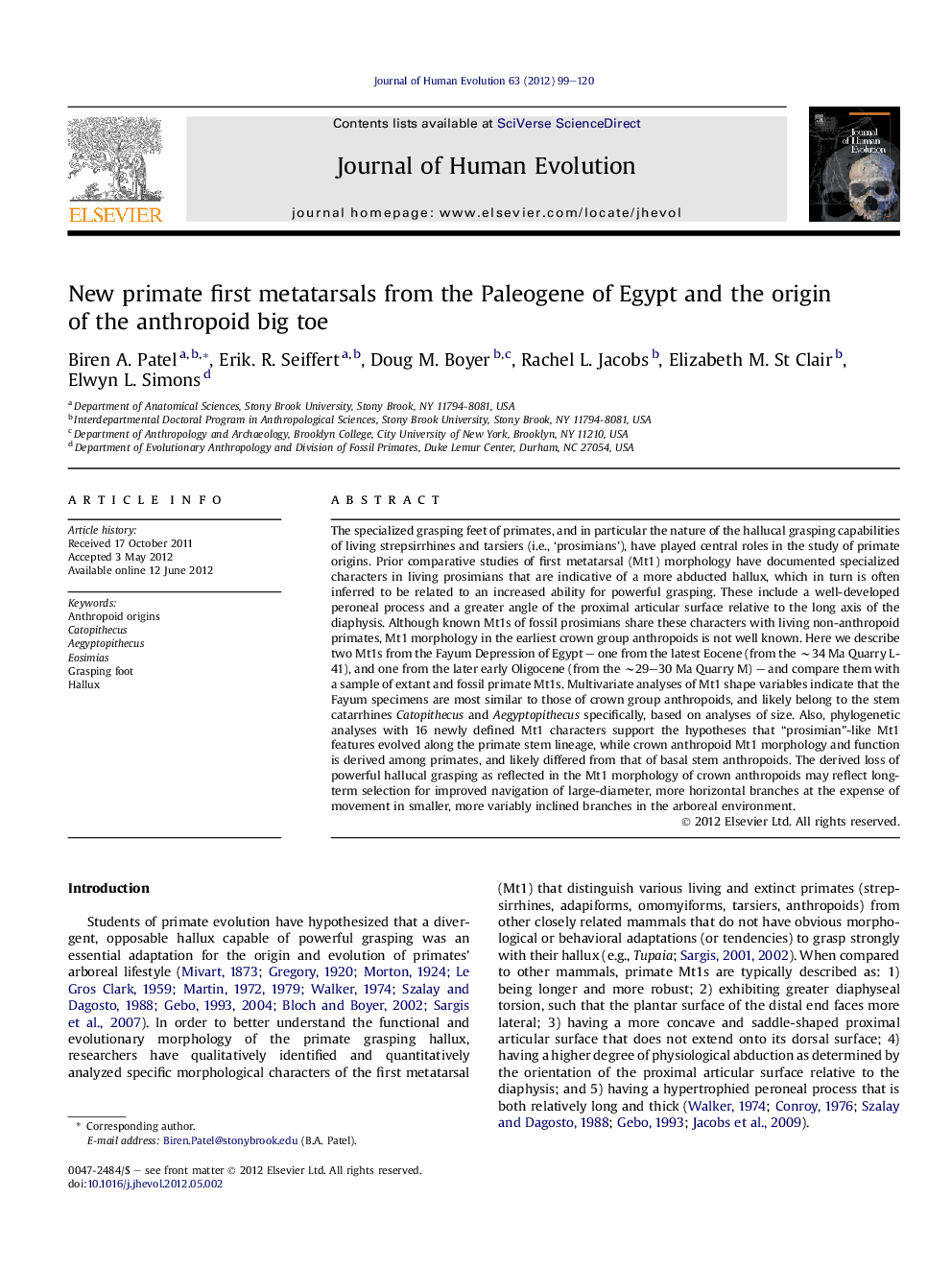| کد مقاله | کد نشریه | سال انتشار | مقاله انگلیسی | نسخه تمام متن |
|---|---|---|---|---|
| 4556487 | 1329483 | 2012 | 22 صفحه PDF | دانلود رایگان |

The specialized grasping feet of primates, and in particular the nature of the hallucal grasping capabilities of living strepsirrhines and tarsiers (i.e., ‘prosimians’), have played central roles in the study of primate origins. Prior comparative studies of first metatarsal (Mt1) morphology have documented specialized characters in living prosimians that are indicative of a more abducted hallux, which in turn is often inferred to be related to an increased ability for powerful grasping. These include a well-developed peroneal process and a greater angle of the proximal articular surface relative to the long axis of the diaphysis. Although known Mt1s of fossil prosimians share these characters with living non-anthropoid primates, Mt1 morphology in the earliest crown group anthropoids is not well known. Here we describe two Mt1s from the Fayum Depression of Egypt – one from the latest Eocene (from the ∼34 Ma Quarry L-41), and one from the later early Oligocene (from the ∼29–30 Ma Quarry M) – and compare them with a sample of extant and fossil primate Mt1s. Multivariate analyses of Mt1 shape variables indicate that the Fayum specimens are most similar to those of crown group anthropoids, and likely belong to the stem catarrhines Catopithecus and Aegyptopithecus specifically, based on analyses of size. Also, phylogenetic analyses with 16 newly defined Mt1 characters support the hypotheses that “prosimian”-like Mt1 features evolved along the primate stem lineage, while crown anthropoid Mt1 morphology and function is derived among primates, and likely differed from that of basal stem anthropoids. The derived loss of powerful hallucal grasping as reflected in the Mt1 morphology of crown anthropoids may reflect long-term selection for improved navigation of large-diameter, more horizontal branches at the expense of movement in smaller, more variably inclined branches in the arboreal environment.
Journal: Journal of Human Evolution - Volume 63, Issue 1, July 2012, Pages 99–120